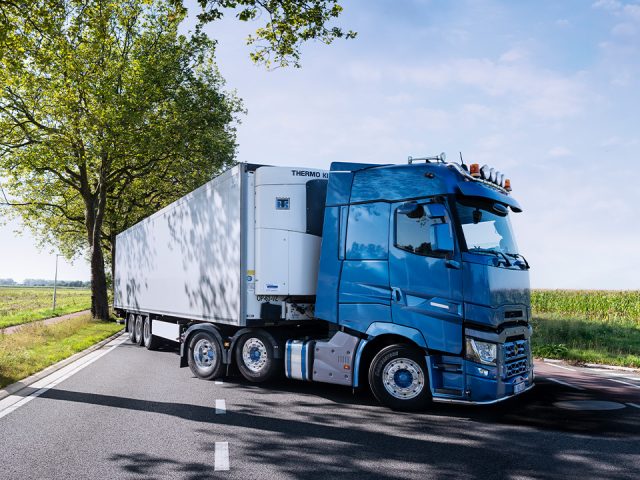
7th June 2022
Cutting global food loss: the importance of real-time insight
Climate Commitment
Sustainability
TrucKing
We can all appreciate the advantages of varied and healthy eating. Particularly the nutritional benefits that come with a diet heavy in whole, unprocessed foods rich in fruits, vegetables, protein, and healthy fats.
If nothing else, such raw material for the body has been found to decrease the risk of early death by 56%. But knowing this is one thing. Being able to access such foods on a daily basis is something else entirely:
- Food producers over the world grow enough food for the entire human population
- Current production could in fact feed 10 billion (so everyone today and those expected by 2050)
- Food loss however is catastrophic, estimated by the UN at around one third of everything produced (1.3 billion tons per year)
The impact of global food loss
Food loss is the damage and spoilage occurring between the producer and the market. It’s a problem caused by a variety of factors, including a lack of temperature management at harvest and poor packaging during transport and storage.
Then there’s the impact. Due to the sheer scale involved, these losses deny food security to large sections of the global population:
- A 2020 report by the World Bank suggests that nearly 690 million people (8.9% of the global population) are routinely hungry
- The World Food program (WFP) predicts this number will reach 840 million by 2030
Not that this is a problem reserved for less developed nations. The WFP’s Hunger Map does indeed show Africa and South East Asia as being worst affected, but it’s also an issue for an estimated 8-20% of populations in developed countries as well.
As for causes, there are a variety of factors ranging from the economic to the political. Many of which are only solvable by governments and world bodies. But there is one area at least that can be improved upon today, and that’s the performance of global cold chains.
Smart farming: reducing losses after harvest
The big impact of global cold chains has been their ability to extend refrigeration beyond simple storage, to providing a bridge linking farmers to buyers – while also expanding the selling ranges involved.
Yet the potential for loss still exists at every stage of this chain, including handling and storage, processing and packaging, distribution, and retail. Which is why, when it comes to the movement of refrigerated produce across air, sea, road, and rail, IoT connectivity can significantly bolster overall performance by:
- Providing real-time insight into the exact condition of a food stock throughout the duration of its journey
- Identifying any problems (e.g., too high a temperature inside a reefer) and finding an adequate solution before food spoils
- Delivering insight into potential issues before they happen, thereby giving fleet managers proactive control to mitigate risk
Alongside these tactical benefits run those of a more strategic nature, which can be achieved once every single part of the supply chain is reliably connected. Only then can producers hope to grow, pick, and ship food stocks in line with actual consumption demands – and be confident it reaches the fork in a suitable condition.
From problem to solution
What telematics essentially offer is ‘eyes’ into local conditions. This is an increasingly vital, given the many factors that can cause a break in the cold chain, including:
- Human error: ranging from poor loading practices to simply leaving a cargo door open too long
- Process error: focused on areas such as scheduling delays or insufficient pre-cooling etc.
- Equipment error: which can feature for example inadequate insulation and poorly functioning refrigeration units
That’s a lot of potential errors that both food retailers and regulators are duty-bound to take interest in, given the impact on food of any break in the cold chain – from spoilage to actual poisoning! In fact, it’s estimated that contaminated food caused by poor transport practices causes 5.4 million cases of gastroenteritis in Australia alone every year!
It should also be kept in mind that telematics can be used to monitor the behavior of individual drivers. Insights that can be used to ensure they’re complying with the rules of the road, and not compromising cargoes as a result – while also helping improve overall safety.
Tried and tested technology
Thermo King has long been a leader in telematics. Our Connected Solutions range extends visibility across a customer’s full multi-modal operation, delivering 24/7 monitoring and two-way interaction capabilities between drivers, Fleet Managers, and their transport refrigeration units.
For food transporters, this is technology that’s able to deliver immediate advantages to their day-to-day operations, including the ability to:
- Demonstrate clear temperature audit trails for each load during the entirety of its journey
- Redirect resources in response to any critical issue to protect food integrity
- Predict servicing issues in advance to help maximize uptime and avoid breakdowns
Play your part in cutting food wastage
The lack of global food security is a problem that’s not going away anytime soon. Yet knowing that enough food is being grown each year helps narrow the focus, while emphasizing the urgent need to reduce food wastage up and down the global cold chain.
Thermo King is passionate about supporting this endeavor. Our Connected Solutions technology is playing a key role in helping Fleet Managers improve the delivery of perishable goods, while also ensuring maximum customer satisfaction through a smooth and consistent service.
To find out more, visit the Connected Solutions website.



